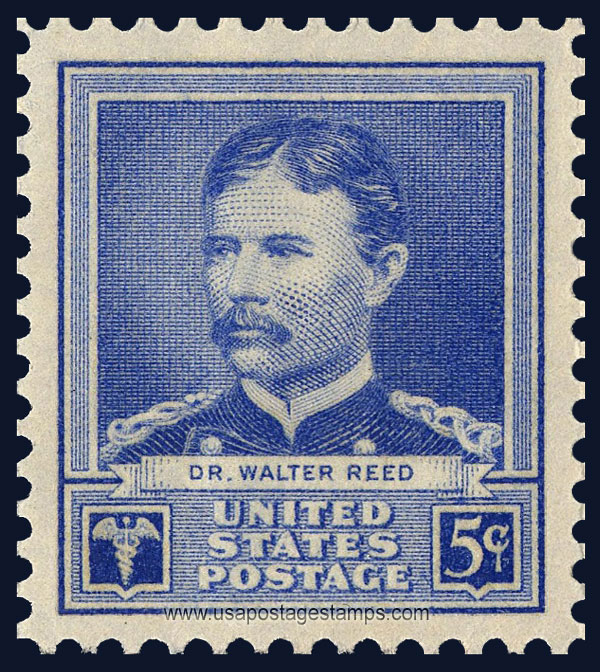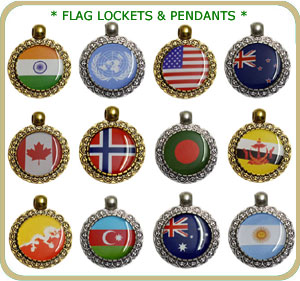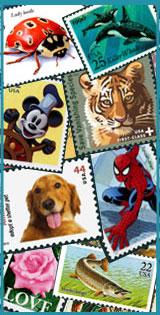US 1940 Physician Dr. Walter Reed 5c. Scott. 877

Series: Famous Americans Issue - Scientists
Issued date: 17-04-1940 (dd/mm/yyyy)
Face value: 5c.
Emission: Commemorative
Watermark: No Watermark
Catalogue No:-
Scott (USA): 877
Stanley Gibbons (UK): 874
Michel (Germany): 473
Yvert et Tellier (France): 436
Dimensions (height x width):
29mm x 26mm
Printer: Bureau of Engraving and Printing
Print Method: Rotary press
Stamp Colors: Ultramarine
Perforation: Perf 10½ x 11
Themes: Scientist, Doctor, Famous People
Total print: 23,779,000 (estimate)
Issued date: 17-04-1940 (dd/mm/yyyy)
Face value: 5c.
Emission: Commemorative
Watermark: No Watermark
Catalogue No:-
Scott (USA): 877
Stanley Gibbons (UK): 874
Michel (Germany): 473
Yvert et Tellier (France): 436
Dimensions (height x width):
29mm x 26mm
Printer: Bureau of Engraving and Printing
Print Method: Rotary press
Stamp Colors: Ultramarine
Perforation: Perf 10½ x 11
Themes: Scientist, Doctor, Famous People
Total print: 23,779,000 (estimate)
Description:- Walter Reed (1851-1902) was a U.S. Army physician who in 1901 led the team that confirmed the theory of Cuban doctor Carlos Finlay that yellow fever is transmitted by a particular mosquito species rather than by direct contact. This insight gave impetus to the new fields of epidemiology and biomedicine, and most immediately allowed the resumption and completion of work on the Panama Canal (1904–1914) by the United States. Reed followed work started by Carlos Finlay and directed by George Miller Sternberg, who has been called the "first U.S. bacteriologist".
Source: en.wikipedia.org/wiki/Walter_Reed
Source: en.wikipedia.org/wiki/Walter_Reed




